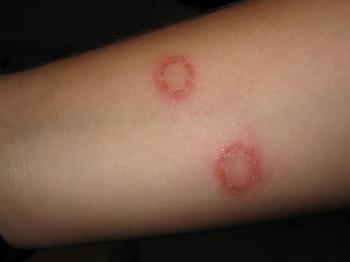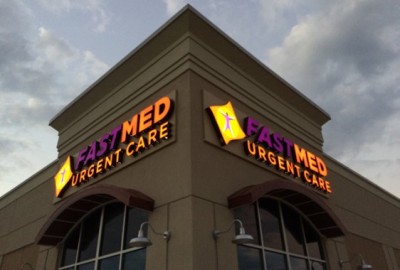Ringworm is a fungal infection that can be easily transmitted anywhere, especially in places such as a locker room or on playground equipment. Luckily, ringworm infections are treatable. Learn to spot the scaly rashes that are a sign of ringworm and how to treat the symptoms. Treatment typically requires antifungal medication.
As your child returns to school — and faces an increased risk of contracting ringworm — learn the signs and symptoms of the infection and how to treat it quickly.
What Are Common Ringworm Symptoms?
 Ringworm (or dermatophytosis) is a fungal infection on the skin. The signs of ringworm appear as red and scaly blotches on the affected areas of the skin that can spread if left untreated. The infection commonly appears on the hands, scalp, feet, and groin.
Ringworm (or dermatophytosis) is a fungal infection on the skin. The signs of ringworm appear as red and scaly blotches on the affected areas of the skin that can spread if left untreated. The infection commonly appears on the hands, scalp, feet, and groin.
Types of Ringworm and How They Spread
There are three types of the ringworm infection:
- Trichophyton
- Microsporum
- Epidermophyton
These types of ringworm are highly contagious and are typically contracted through physical contact with the infection. This can be from person-to-person, animal-to-person, and even soil-to-person contact. Ringworm can often be contracted in warm, moist climates, such as locker rooms and near swimming pools.
Signs and Symptoms of Each Type of Ringworm
Different signs and symptoms of ringworm may appear, depending on where the infection is located:
- Body (chest, arms, stomach, legs, back) symptoms include rashes with red, scaly, moist, and sometimes crusty edges. Rashes can develop blisters, and the center can clear up so it appears as a ring. New rashes can appear around the edges.
- Face (ears) symptoms include red, scaly rashes without distinct edges that can get worse in the sun. Patchy hair loss may occur.
- Jock Itch (groin, skin folds, inner thighs, buttocks) and Athlete’s Foot (foot) symptoms include rashes with red, scaly edges. Rashes can develop pus-filled blisters that can ooze, and the center can turn brownish-red.
- Hand (palm, back of hand) symptoms include rashes with red, scaly edges. Skin between fingers are often moist and develop open sores. Symptoms are often mistaken for eczema.
Treatment for Ringworm
 For most cases of ringworm, topical or oral antifungal medications are the only solution to effectively treat the infection. However, based on the medical history and age of the infected individual, a healthcare provider may recommend prescription medication.
For most cases of ringworm, topical or oral antifungal medications are the only solution to effectively treat the infection. However, based on the medical history and age of the infected individual, a healthcare provider may recommend prescription medication.
Let the medical professionals at FastMed Urgent Care examine your child’s signs and symptoms of ringworm. At FastMed Urgent Care, our mission is to positively impact the lives of our patients and their families.
But don’t just take our word for it. Check out what Mary had to say about her experience with FastMed: “The professionals at the urgent care center are courteous, as well as speedy. The facility is very clean and inviting. I have been to the medical center a few times, and have sent friends there. No one’s ever been disappointed.”
———-
Sources:
HealthLine: https://www.healthline.com/health/ringworm
MedicineNet: http://www.medicinenet.com/ringworm
WebMD: https://www.webmd.com/skin-problems-and-treatments/ringworm-of-the-skin-symptoms
MedicineNet: http://www.medicinenet.com/ringworm